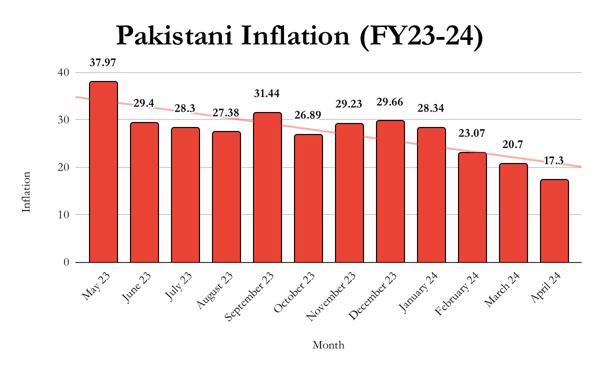Overview of Pakistan's Economic Performance for FY25
The Ministry of Finance (MoF) recently released the Economic Survey of Pakistan for FY25, which indicates a provisional real GDP growth of 2.68% for the year, an increase from the previous year's growth of 2.51%. This growth, however, is disappointing when compared to the long-term average of 4.7% and the five-year average growth rate of 3.4%. It falls short of the government’s initial target of 3.6% for FY25, highlighting ongoing economic challenges.
International institutions such as the IMF and World Bank had projected GDP growth rates of 2.6% and 2.8%, respectively, which aligns closely with the reported figures, reflecting a cautious optimism in global economic trends.
Sector Performance Insights
Analysis from Topline Securities suggests that the GDP growth figure may be subject to downward revision, particularly due to inflated industrial growth rates, which reported a provisional increase of 4.77%, contrasting sharply with a contraction of 1% observed in the first nine months of the fiscal year.
Services and Industrial Growth
The services sector showcased a provisional growth of 2.91% in FY25, up from 2.19% in FY24. Notably, the Public Administration and Social Security segment led with a remarkable growth of 9.92%, while the wholesale and retail trade saw minimal growth at just 0.14%. Analysts expect that the services sector may outperform initial estimates as the fiscal year progresses.
Agricultural Sector Challenges
Conversely, the agricultural sector is facing a challenging landscape, presenting its lowest growth rate in nine years at just 0.56%. This downturn is largely attributed to significant declines in the production of crucial crops, including a 19.03% drop in cotton and a 13.49% decline in important crops due to adverse weather conditions and reduced cultivation areas.
Government Reforms and Economic Policies
During a recent press briefing, the Finance Minister discussed several structural reforms initiated by the government aimed at fostering sustainable economic growth. These reforms include:
- Improvements in the governance structure of Distribution Companies (DISCOs).
- Mobilizing PKR 1.25 trillion through banking channels to clear legacy circular debts.
- Implementing a defined contribution pension plan for new government recruits.
- Continuing rightsizing efforts within the federal government.
Surging Tax Exemptions
One significant concern arising from the Economic Survey is the dramatic increase in tax exemptions, which have ballooned to a staggering PKR 5.8 trillion this fiscal year. This represents a nearly PKR 2 trillion increase from the previous year, highlighting a disconnect with the government's efforts to reduce tax exemptions during the past budget cycle.
Details of Tax Exemption Costs
In dollar terms, this increase in tax losses corresponds to approximately $21 billion, exceeding the $17 billion necessary for Pakistan to repay its maturing debts. This rise casts doubts on the accuracy of previous estimates regarding tax expenditures and raises questions about the growing trend of hidden tax exemptions across various sectors.
A senior official from the Federal Board of Revenue (FBR) acknowledged the possibility of errors in reporting the PKR 5.8 trillion figure, indicating plans for a revision that may exclude certain losses attributed to petroleum products. Tax exemption costs for sales tax surged to PKR 4.3 trillion, driven largely by exemptions on petroleum products and other essential goods.
Outlook for Future Economic Performance
Looking ahead, Pakistan's economic landscape remains precarious as it navigates the dual challenges of enhancing growth while managing escalating tax expenditures. The agricultural sector's performance remains critical, with adverse weather and declining production continuing to threaten its contribution to the economy.
As the government prepares to present the federal budget for 2025-26, economic stakeholders will be keenly observing proposed measures to revitalize both growth and revenue collection, setting the stage for the coming fiscal year.
Bias Analysis
Key Questions About This Article




